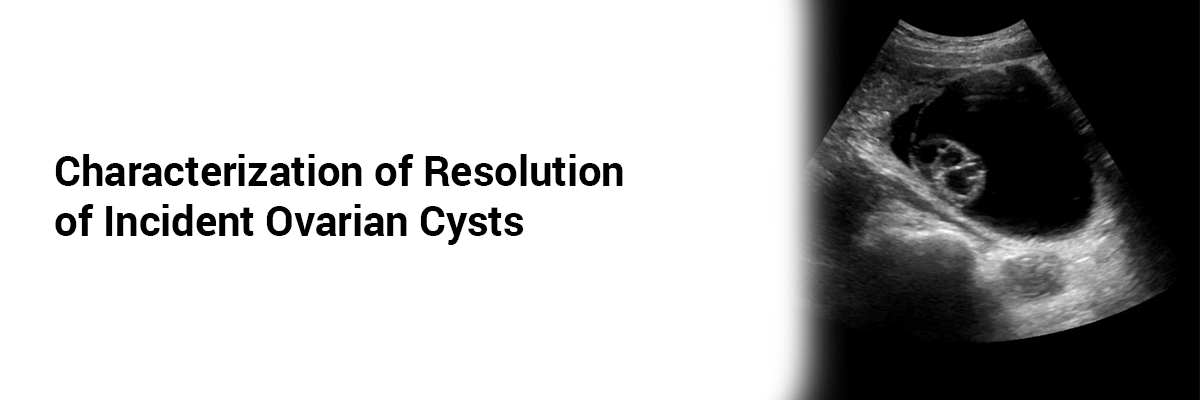
Characterization of resolution of incident ovarian cysts
Smaller ovarian cysts smaller than 3 cm resolve faster than cysts that are larger than 6 cm, suggests a study published in the journal Obstetrics & Gynecology.1
Over a 30-year period, 47,762 people were enrolled in the University of Kentucky Ovarian Cancer Screening Trial (UK-OCST), 2638 of whom had incident cysts. The objective of the study was to determine the surveillance intervals of these incident ovarian cysts. Various factors associated with the resolution of the cysts such as age, BMI, use of hormone replacement therapy (HRT), cyst diameter, cyst structure, menopausal status and family history of ovarian cancer were also assessed.
Of the 2638 women who had incident cysts, 1667 (63.2%) had cyst resolution in 1.2 years, while the cysts persisted in 971 (34.8%) women. While the resolution rates of unilocular and septated cysts within a year were comparable (35.4% and 36.7%, respectively), the unilocular cysts had a shorter time to resolution (mean 1.89 years vs. 2.58 years, respectively). Cysts smaller than 3 cm, whether unilocular or septated, resolved more quickly than those larger than 6 cm.
Younger age, premenopausal status (except for synchronous bilateral cysts) and family history of ovarian cancer were factors linked to percent resolution. Non-use of HRT and age ≥ 70 years were linked to a faster cyst resolution rate. Cyst resolution time was not correlated with BMI or family history.
This study highlights the different resolution times for ovarian cysts in relation to the age, cyst structure, cyst size and use of HRT. This will help guide clinicians to plan their line of management, whether to go in for surgery or continue monitoring the cyst.
Reference
1. Lasher A, et al. Variables associated with resolution and persistence of ovarian cysts. Obstet Gynecol. 2023 Oct 12. doi: 10.1097/AOG.0000000000005411














Please login to comment on this article